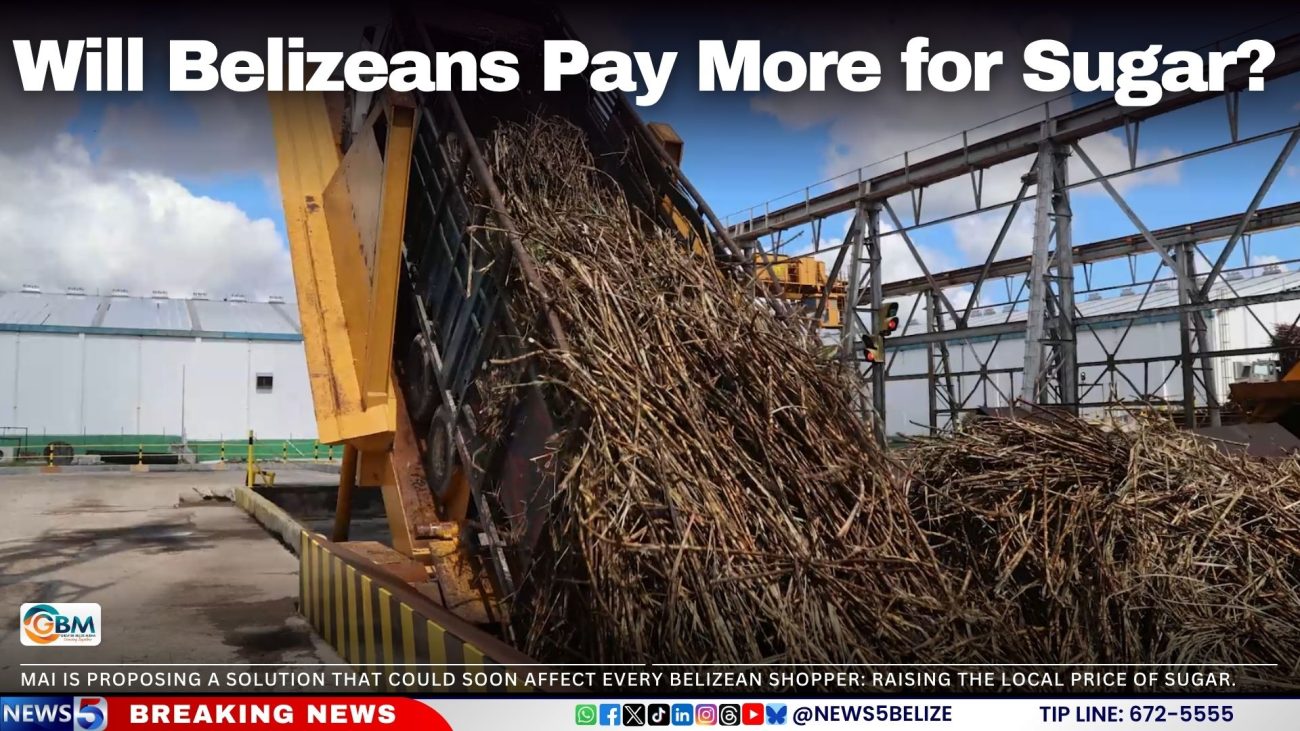Will Belizeans Pay More for Sugar?
Belize’s sugar industry is in crisis, and now the big question is whether Belizeans will soon be paying more for sugar.
The 2024–2025 sugar crop has been described by Prime Minister John Briceño as “one of the worst we’ve had in a long time”, and industry officials have confirmed the severity of the situation.
Sean Chavarria, Director of Finance at BSI, said the only comparable season was in 2020, which still performed better than this year. “The total cane received is just under 884,000 metric tonnes. That’s a low for us,” he stated. “That’s even below the 2020 crop, which followed a major drought in 2019.” It is one of the lowest volumes recorded in more than 30 years.
It is not just the quantity that has fallen. Quality has also declined. The Tonnes of Cane to Tonnes of Sugar (TCTS) ratio now stands at 11.2. This means significantly more cane is needed to produce one tonne of sugar, making the process less efficient and more costly. BSI projects total sugar production at just under 79,000 metric tonnes, a level not seen since 2008.
For context, that figure is more than 97,000 tonnes less than what was produced last year and over 154,000 tonnes below 2019 levels. In financial terms, the industry is projected to generate about 110 million dollars this year. That is a sharp drop from the 156.5 million dollars earned last year, resulting in an estimated loss of 53 million dollars.
One of the main reasons for this dramatic decline is the spread of Fusarium Wilt, a destructive fungus that has infected over 60,000 acres of sugarcane and severely damaged another 80,000. Additional challenges such as excessive rainfall, mill stoppages, and labour shortages have made the situation even worse.
Farmers are among the hardest hit. Last year, they earned over 90 dollars per tonne of cane. According to Briceño, “Based on the current sugar price estimate, farmers are expected to earn no more than 65 dollars per ton of cane this year. This represents a reduction of 25 dollars per ton when compared to the 90 dollars and 23 cents per ton that was paid out last year.”
The government has responded with a 500,000-dollar pilot project to test treatment options for the disease. Supported by regional and international partners, nearly three million dollars have been allocated for an emergency response. Some of these treatments have shown early promise in field tests, and the plan now is to scale up to treat the first 2,500 acres in the north.
Despite the difficulties, BSI’s Director of Finance, Sean Chavarria, expressed cautious optimism. He said the challenges are not insurmountable and pointed to solutions such as field renovation, increased access to credit, and mechanised harvesting to reduce reliance on manual labour. “The hope that we have is that our problems are solvable,” he said. “All these issues can be solved with better field renovation, access to credit, and mechanization of harvesting.”
While the figures are alarming, Minister Mai insists that Belize has enough sugar to meet local demand. “Our local consumption is twelve thousand tons,” he explained. “Even with a drop to seventy-eight thousand tons in production, we still have enough for local consumption.”
The bigger danger, he warned, is that sugar meant for Belizean households could be disappearing across the northern border. “What I am uncertain of is how Mexico is coping with their local demand,” Mai said. “Their price is three times higher than Belize. So if the price is three times there and our price is seventy-five cents, the contraband becomes rampant, uncontrollable.”
To stop this, Mai is proposing a solution that could soon affect every Belizean shopper: raising the local price of sugar.
“We need to increase our price to maintain our sugar here,” he said. “And damned we will not import sugar from the U.S. this year. This is not something we encourage. It is not good for the country.”
Mai believes an increase would not only discourage illegal exports but also help ensure farmers receive fair compensation for their crops. “We are getting some push back,” he acknowledged, “but I think it is fair the farmers get a fair price for sugar. We are working on a paper. I submitted one to Cabinet but we did not get approval for it. But we think it is necessary.”






Facebook Comments